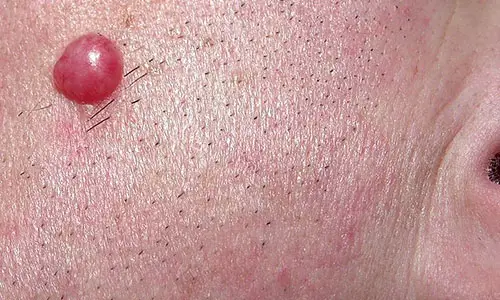1.A world-wide infectious disease caused by bacteria.
- Lyme disease is a vector-borne disease.
- It is also known as borreliosis.
- Borrelia burgdorferi is the causative agent of Lyme disease which belongs to Borelia type bite from infected parasites.
2. Lyme disease infections are caused by infected ticks on their nymphal stage.
- The life cycle of ticks has 4 stages.
- Adult female tucks lay thousands of eggs on the host (animal).
- Eggs will then hatch into larva (seed tick). Tick in larval stage has already a defined 6 legs.
- Nymphal stage is where the ticks have already 8 defined legs. In this stage the ticks thrive in their host (rodents or deer) and wait for a passing host to grasp on. This is why tick bites are usually unnoticed because ticks are very tiny during this stage.
- Adult blacklegged ticks will then find a host where they can feed in and breed again.
3 . Rodents and deer are the favorite reservoirs of the Lyme disease-carrying ticks.
- The disease is transmitted through a tick bite by sucking the host’s blood.
- Person to person contact and foods is not the mode of transmission.
- The transmission of the infection takes 24 hours upon attachment to the host’s skin
- Your pets at home can also be a possible reservoir for ticks. Do a daily check on them for the presence of ticks.
4. There are 3 stages of infection of Lyme disease infection.
- Early localized infection is the appearance of circular rash on the site of the tick bite stretching towards the outside surrounding the circular rash. This rash usually appears 3 days after the infection up to more than 4 weeks. The rash is called erythema migrans.
- Early dissemination stage is where the bacteria commences bloodstream involvement and symptoms start to experienced by the infected individual such as muscles or joint pains and feeling of unsteadiness.
- Late dissemination stage is when the infection has entirely spread throughout the body. Serious complications may occur
5. High cases of Lyme disease is seen on children
- Children spend most of their times playing outside the house.
- Ticks are every which are very tiny and can easily grasp on potential hosts.
- It is advisable to parents to apply insect repellent lotion to their children on seasons where tick related diseases are prevalent.
6. Western blot test is used for diagnosing Lyme disease
- The first immunoblot test specifically developed for Lyme disease testing.
- The test aims to look for antibodies in the body against to the antigen of the bacteria Borrelia burgdorferi (the bacteria that cause Lyme disease).
7. Lyme disease cases are rising every spring and summer.
- Climate change plays a significant impact on the occurrence of vector-borne disease.
- Seasonal temperature and regional humidity is a climate-based environment for several infectious diseases.
- An increase in climatic temperature makes a suitable season for ticks.
8. Lyme disease is also an occupational risk.
- Workers at risk are those working in several field works such as forestry, landscaping, farming or park and wildlife management.
- As employers, it is their key responsibilities to provide basic training and information about Lyme disease and necessary personal protective measures to their workers.
9. Chronic Lyme disease may produce autoimmune disease, is a misconception.
- There are no known studies which prove that Lyme infection may lead to disease autoimmunity.
- One of treatment set for Lyme disease is a 2 to 4 week antibiotic course.
- Commonly used oral antibiotics includes amoxicillin or doxycycline.
- Post-Treatment Lyme Disease Syndrome is when a patient still experiences the symptoms of the disease even after completing the course of antibiotics which lasts for several months.
- The exact cause is unknown.
10. There is no known vaccination for Lyme disease.
- Previously, there was an available vaccine for Lyme disease.
- In 2002, the manufacturing discontinued because the vaccine doesn’t provide a long time protection.
- There is no current vaccine for the disease.
- The best way to protect yourself from getting the infection is to have a tick free environment by taking necessary measures like keeping your house and backyard clean.











Leave a Reply